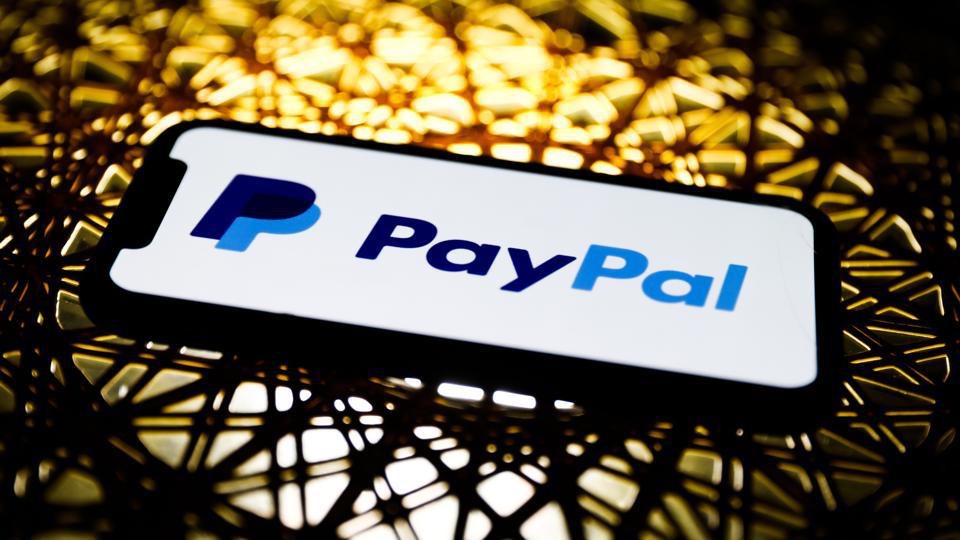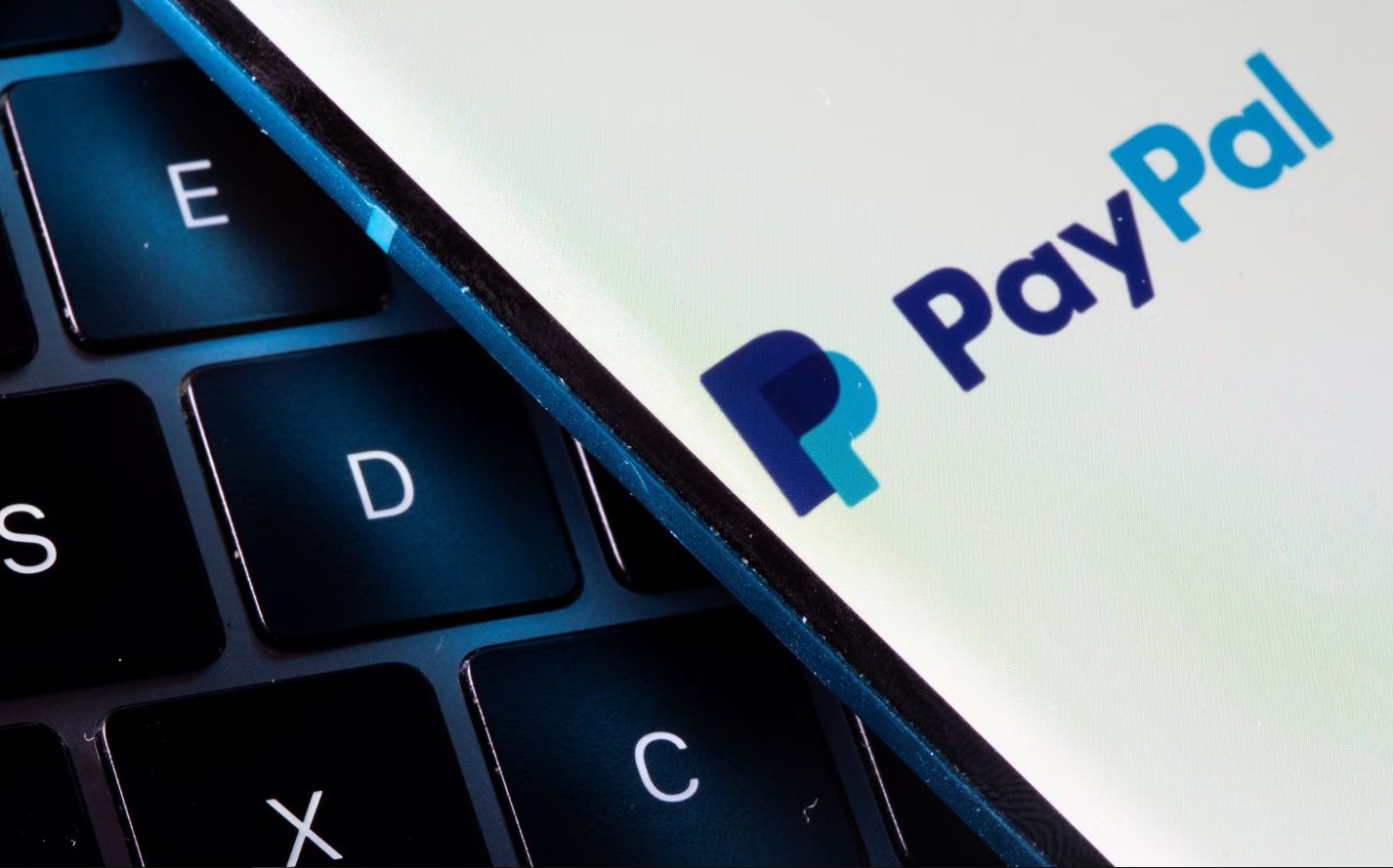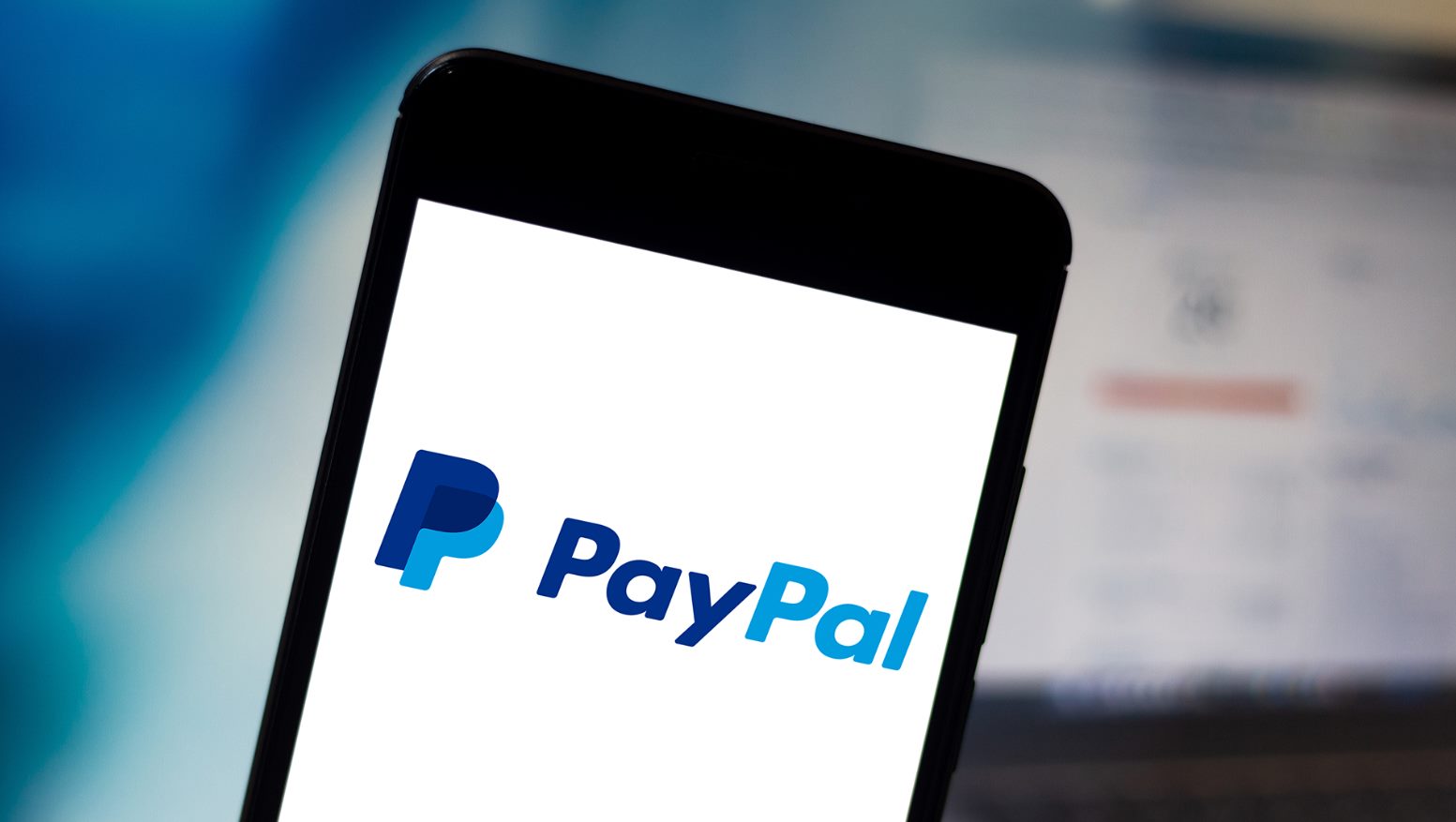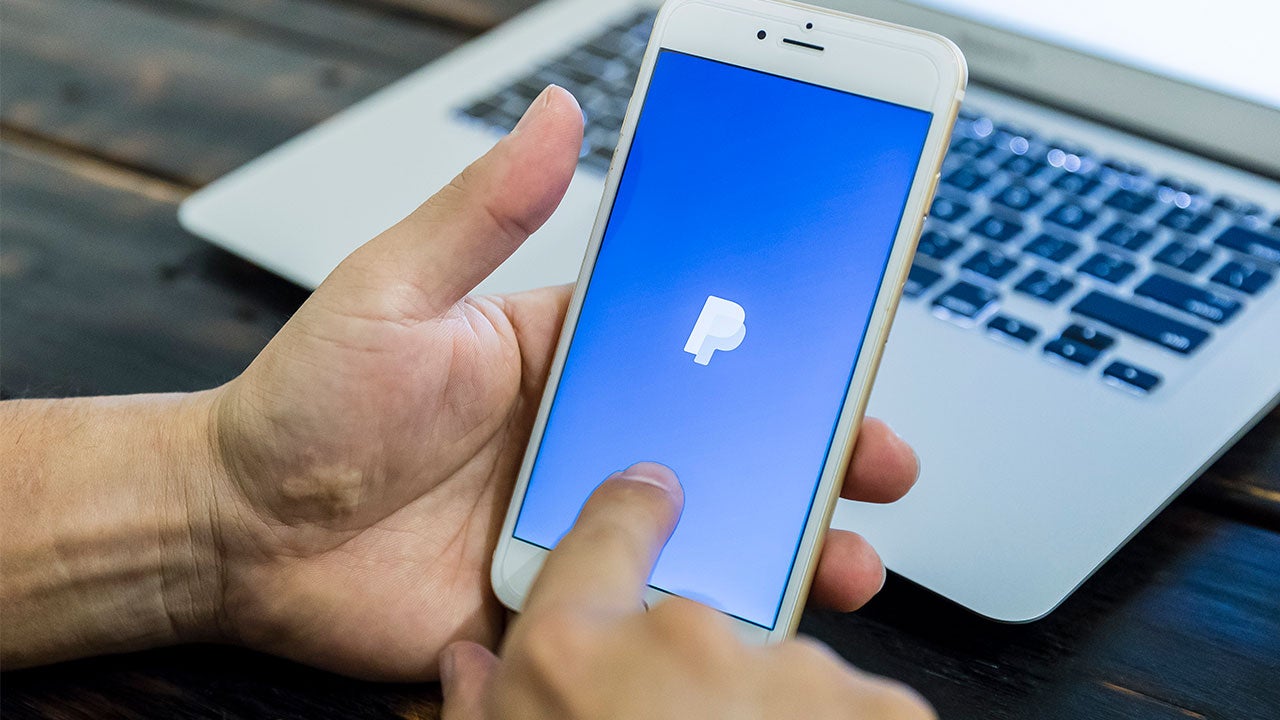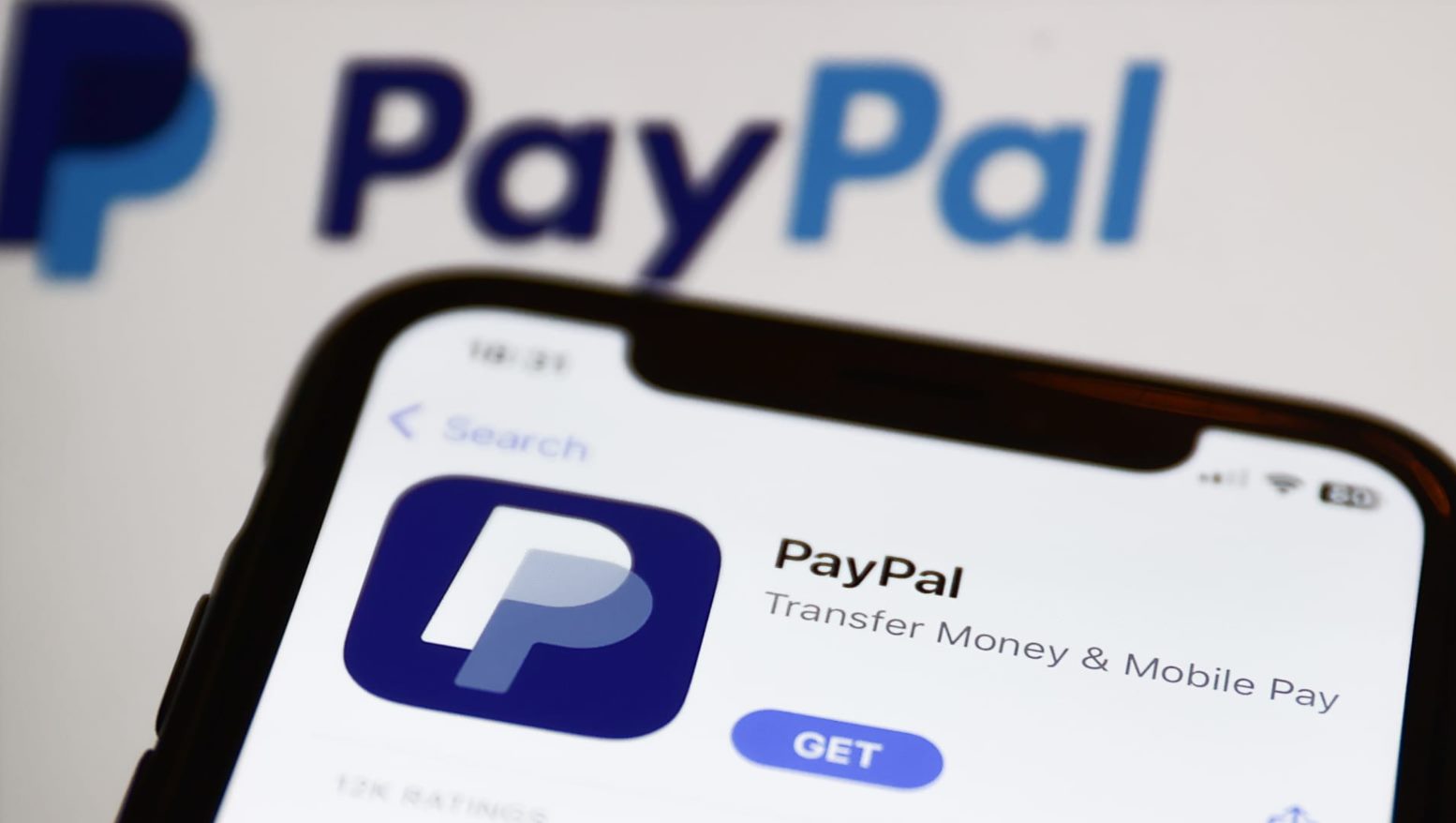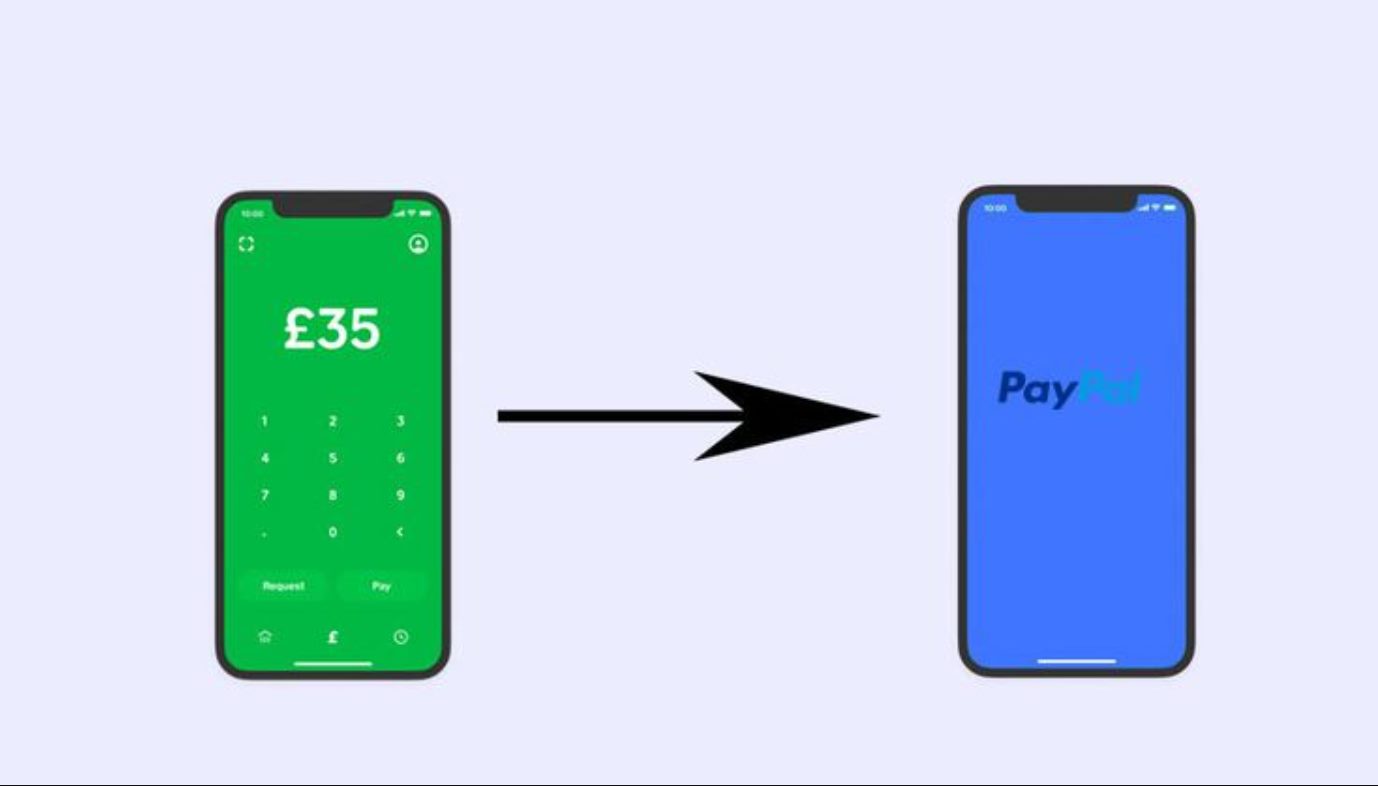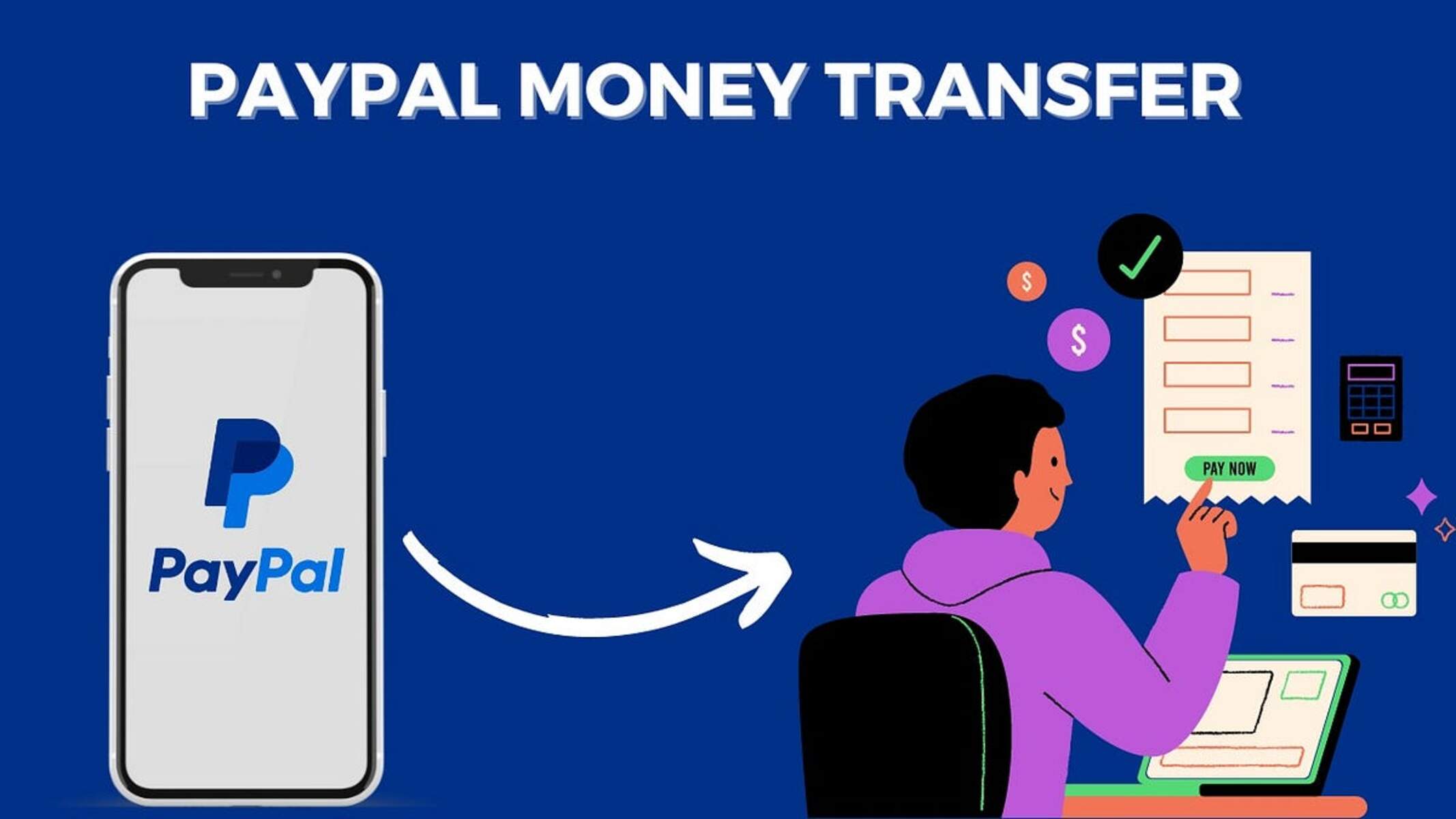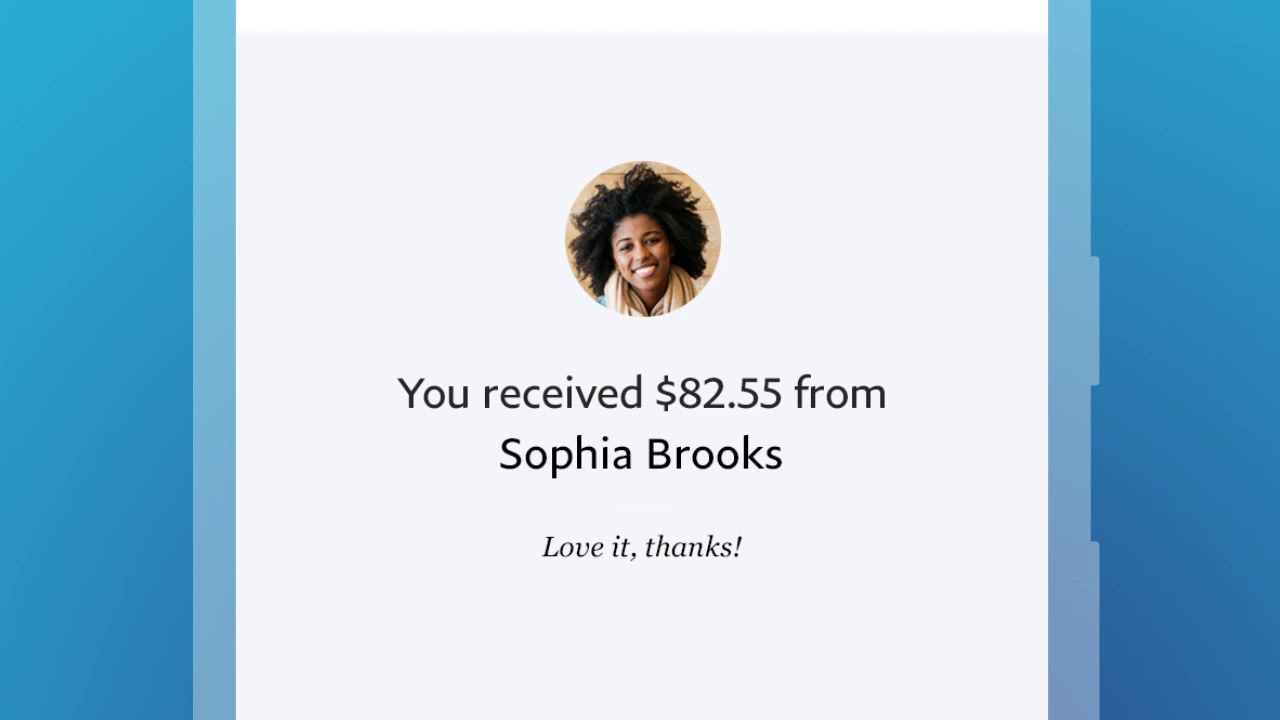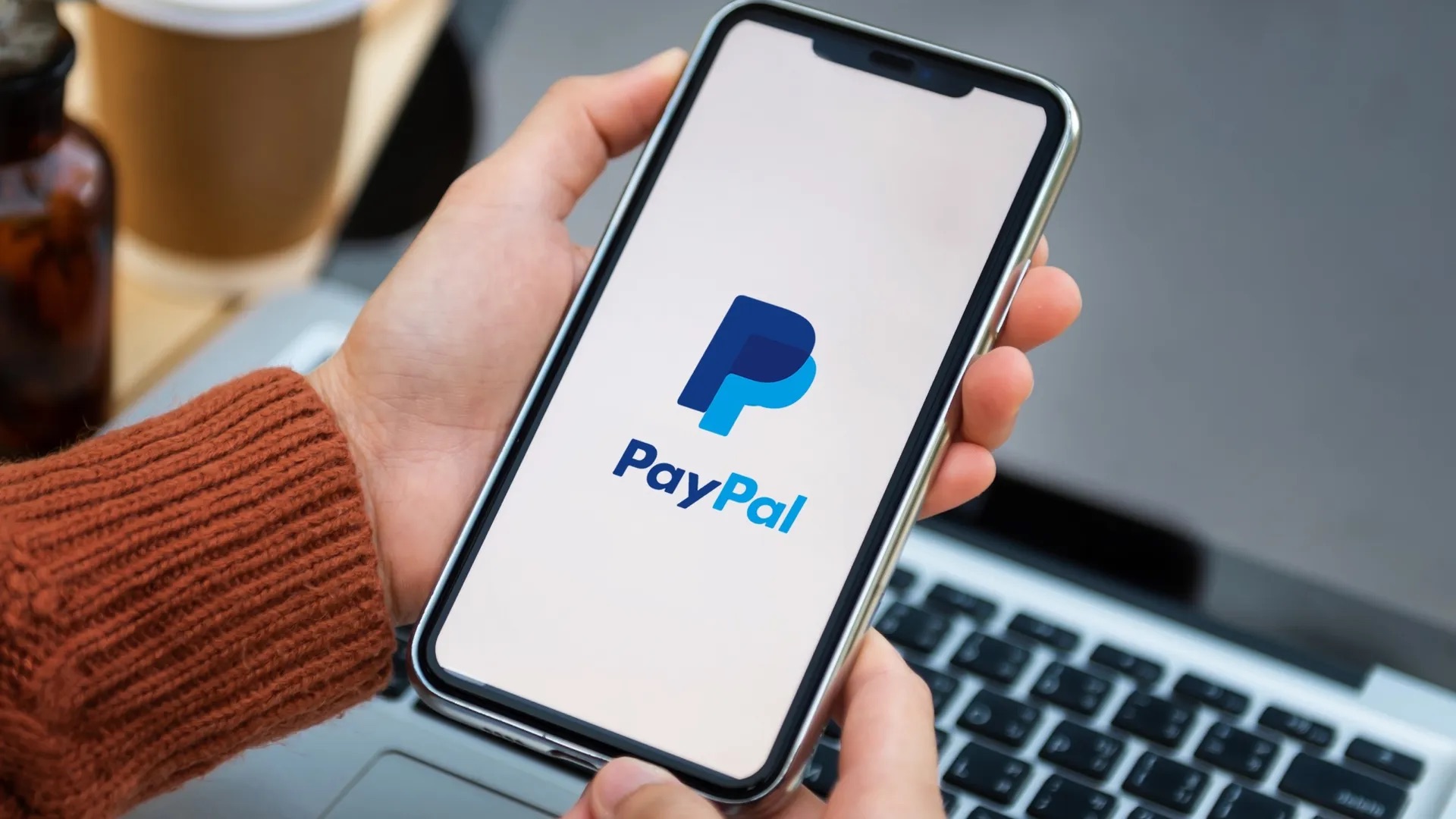Introduction
Welcome to our guide on how to send money using PayPal. PayPal is a popular and convenient online payment platform that allows you to securely send and receive money from anywhere in the world. Whether you need to send money to friends and family or make a payment for goods and services, PayPal offers a simple and reliable solution.
In this article, we will walk you through the step-by-step process of sending money using PayPal. We will cover everything from setting up your PayPal account to verifying your payment details and tracking your transactions. By the end of this guide, you will have all the information you need to confidently send money using PayPal.
With the growing popularity of online shopping and the need for seamless financial transactions, PayPal has become an essential tool for individuals and businesses alike. Its user-friendly interface, robust security measures, and widespread acceptance make it the go-to choice for millions of users worldwide.
Whether you are sending money to a family member overseas, paying for a product or service, or splitting a bill with friends, PayPal makes it incredibly easy to transfer funds with just a few clicks. Plus, you can link your PayPal account to your bank account or credit/debit card, giving you flexibility and convenience without the need for physical cash.
So, if you’re ready to discover how to send money using PayPal, let’s dive in and get started!
Setting up a PayPal Account
Before you can start sending money using PayPal, you’ll need to set up an account. Here’s a step-by-step guide to help you get started:
- Go to the PayPal website and click on the “Sign Up” button. You will be redirected to the account creation page.
- Choose the type of account you want to create – personal or business – and click on the corresponding option.
- If you’re creating a personal account, you’ll be asked to provide your email address, create a password, and enter your personal information such as your name and address.
- If you’re creating a business account, you’ll need to provide additional details about your business, such as its name, type, and address.
- After filling in the required information, click on the “Agree & Join” button to continue.
- You will be prompted to link your bank account or credit/debit card to your PayPal account. This step is not mandatory, but it allows you to easily transfer funds to and from your PayPal account.
- Follow the instructions provided by PayPal to link your bank account or credit/debit card. You may need to provide additional information such as your bank account number or card details.
- Once your account is set up and verified, you’re ready to start sending money using PayPal!
It’s important to note that PayPal may require additional verification steps to ensure the security of your account. This can include confirming your email address, providing identification documents, or completing a phone verification process. These measures are in place to protect you and prevent fraud, so be sure to follow any instructions provided by PayPal.
Setting up a PayPal account is a straightforward process that should only take a few minutes. Once you have completed the registration, you can start using PayPal to send and receive money online with ease.
Linking Your Bank Account or Credit/Debit Card
In order to fully utilize the features offered by PayPal and make seamless money transfers, it’s recommended to link your bank account or credit/debit card to your PayPal account. This allows you to easily transfer funds to and from your PayPal balance or make payments directly from your linked card. Here’s how to link your bank account or credit/debit card:
- Log in to your PayPal account using your email address and password.
- Once you’re logged in, click on the “Wallet” tab at the top of the page.
- Under the “Bank Accounts and Cards” section, click on the option that says “Link a bank account” or “Link a card” depending on which you want to link.
- If you choose to link a bank account, you’ll be asked to provide your bank account information, such as the routing number and account number. PayPal may make small deposits to your account to verify its authenticity.
- If you opt to link a credit/debit card, you’ll need to enter the card details, including the card number, expiration date, and security code. PayPal may also require you to confirm the card by providing the verification code.
- Follow the on-screen instructions provided by PayPal to complete the linking process. You may be required to authenticate your identity through additional verification steps.
- Once your bank account or card is successfully linked, PayPal will verify the information and make it available for use.
Linking your bank account or credit/debit card not only enables you to transfer money easily, but it also provides an added layer of security. When making payments or sending money using your linked card, PayPal acts as a middleman, keeping your financial information confidential and reducing the risk of exposing your card details to third parties.
Keep in mind that some financial institutions may charge fees for linking your bank account or using certain card features with PayPal. It’s advisable to review the terms and conditions of your bank or card provider to understand any potential charges before linking them to your PayPal account.
By linking your bank account or credit/debit card to your PayPal account, you’ll have more flexibility and convenience in managing your funds and making online transactions. It’s a quick and easy process that ensures a smooth experience when sending money using PayPal.
How to Send Money to Friends and Family
One of the most common reasons for using PayPal is to send money to friends and family. Whether you’re splitting a bill, reimbursing someone for a favor, or sending a gift, PayPal makes it easy to transfer funds securely. Here’s a step-by-step guide on how to send money to friends and family using PayPal:
- Log in to your PayPal account using your email address and password.
- Click on the “Send & Request” tab at the top of the page.
- Under the “Send money to friends and family” section, enter the recipient’s email address or mobile number.
- Next, enter the amount you want to send. You can select the currency, and PayPal will automatically convert it if necessary.
- Add an optional note to the recipient if you would like to include a message along with the payment.
- Review the details of the transaction, including the amount and recipient’s information, and click on the “Continue” button.
- Choose the payment method you want to use. PayPal offers several options, including using your PayPal balance, linked bank account, or credit/debit card. Select the appropriate payment method.
- Review the payment details one last time and click on the “Send Payment Now” button to complete the transaction.
- Once the payment is sent, PayPal will provide a confirmation message and send an email notification to both you and the recipient.
It’s important to remember that when sending money to friends and family, PayPal fees are typically waived. However, if you are sending money internationally or there is a currency conversion involved, PayPal may charge a small fee. Be sure to review the applicable fees on the PayPal website or contact their customer support for more information.
Using PayPal to send money to friends and family offers a secure and convenient way to transfer funds. The recipient can easily access the money by linking their PayPal account to their bank account or by requesting a withdrawal of funds to their linked bank account. PayPal provides an added layer of protection by keeping your financial information confidential and ensuring that the funds reach the intended recipient.
Now that you know how to send money to friends and family using PayPal, you can quickly and efficiently transfer funds whenever needed. Whether it’s repaying a friend or sending a birthday gift, PayPal simplifies the process, allowing you to focus on what matters most – your relationships.
How to Send Money for Goods and Services
In addition to sending money to friends and family, PayPal is widely used for making payments for goods and services. Whether you’re purchasing items online or paying for professional services, PayPal offers a secure and convenient way to transfer funds. Here’s a step-by-step guide on how to send money for goods and services using PayPal:
- Log in to your PayPal account using your email address and password.
- Click on the “Send & Request” tab at the top of the page.
- Under the “Pay for goods and services” section, enter the email address or mobile number of the seller or service provider.
- Enter the amount you want to send for the goods or services. PayPal will automatically convert the currency if necessary.
- Add an optional note to provide additional information or instructions to the seller.
- Review the transaction details, including the recipient’s information and the amount, and click on the “Continue” button.
- Choose the payment method you want to use. PayPal offers various options, such as using your PayPal balance, linked bank account, or credit/debit card. Select the appropriate payment method.
- Review the payment details one last time and click on the “Send Payment Now” button to complete the transaction.
- Once the payment is sent, PayPal will provide a confirmation message, and you will receive an email notification as well.
- Keep track of the transaction by accessing your PayPal account and reviewing your transaction history.
When sending money for goods and services, PayPal offers a layer of security and protection. If any issues arise with your purchase, such as if the item is not delivered or is significantly different from the description, PayPal’s Buyer Protection program may provide you with a refund. However, it’s important to review and understand the terms and conditions of PayPal’s Buyer Protection policy.
Before proceeding with a payment for goods and services, it’s essential to establish trust and ensure that you are dealing with a reputable seller or service provider. Take the time to research the individual or business, read reviews, and gather as much information as possible to make an informed decision.
By using PayPal to send money for goods and services, you can enjoy a secure and seamless payment experience. PayPal simplifies the process, allowing you to complete transactions with ease and confidence. So, next time you’re shopping online or paying for services, consider using PayPal as your preferred payment method.
Choosing the Payment Method and Currency
When sending money using PayPal, you have the flexibility to choose the payment method and currency that suits your needs. PayPal offers various options to accommodate different preferences and situations. Here’s what you need to know about choosing the payment method and currency when sending money:
Payment Method:
PayPal provides multiple payment methods to fund your transactions:
- PayPal Balance: If you have money in your PayPal account, you can use your balance to make payments directly.
- Linked Bank Account: You can link your bank account to your PayPal account and use it as a payment method. When making a payment, the funds will be withdrawn from your linked bank account.
- Credit/Debit Card: PayPal also allows you to link your credit or debit card and use it as a payment source. When making a payment, the funds will be charged to your card.
When choosing the payment method, consider factors such as convenience, availability of funds, and any additional fees associated with each option. Keep in mind that some payment methods may take longer to process than others. It’s important to ensure that you have sufficient funds or credit available in your chosen payment source before initiating a transaction.
Currency:
PayPal supports multiple currencies, allowing you to send money internationally and make payments in different currencies. When initiating a transaction, PayPal will automatically convert the amount to the recipient’s currency if necessary. Here are a few key points to consider when dealing with currency:
Currency Conversion:
If you are sending money in a currency different from your PayPal account’s default currency, PayPal will convert the amount at the prevailing exchange rate. PayPal charges a small fee for currency conversion, which is typically a percentage of the transaction amount.
Exchange Rate:
The exchange rate used by PayPal for currency conversion may differ slightly from the market rate. It’s advisable to check the exchange rate provided by PayPal before finalizing the transaction, as this will determine the converted amount in the recipient’s currency.
Transaction Currency:
When sending money, ensure that you select the correct currency for the transaction. PayPal will display the currency options available based on the recipient’s location and the supported currencies in your account.
Currency Conversion Fees:
In addition to the currency conversion fee, PayPal may charge additional fees for cross-border transactions. These fees can vary depending on the countries involved and the type of transactions. It’s important to review the fee structure on the PayPal website or contact their customer support for detailed information.
By understanding and considering the payment method and currency options provided by PayPal, you can optimize your money transfers and make informed decisions. Whether you choose to use your PayPal balance, linked bank account, or credit/debit card, and whether you’re sending money in your default currency or a different currency, PayPal offers the flexibility and convenience you need to complete transactions with ease.
Verifying Your Payment Details
Before sending money using PayPal, it’s crucial to verify your payment details to ensure the accuracy and security of your transactions. Verifying your payment details helps to prevent potential issues and allows for smooth and hassle-free money transfers. Here’s what you need to know about verifying your payment details:
Reviewing the Transaction:
When initiating a payment, take a moment to review the transaction details before finalizing it. Ensure that the recipient’s information, payment amount, and currency selection are accurate. Double-checking these details can help avoid sending money to the wrong recipient or transferring an incorrect amount.
Confirming the Payment Method:
Before completing a transaction, make sure that you have selected the desired payment method. Review whether you’re using your PayPal balance, a linked bank account, or a credit/debit card. Verifying the payment method is essential to ensure that the funds are withdrawn from the correct source.
Validating the Recipient’s Information:
When sending money, it’s crucial to provide the correct recipient information, such as their email address or mobile number linked to their PayPal account. Verification of the recipient’s details is vital to ensure that the funds are sent to the right person and no mistakes are made during the transfer.
Checking Account Balance:
If you’re using your PayPal balance to make a payment, ensure that you have sufficient funds available. Insufficient funds in your PayPal account may result in the transaction being declined or delayed. To avoid any inconvenience, make sure your account has enough funds to cover the payment amount and any associated fees.
Verifying Card and Bank Details:
If you’re using a linked bank account or a credit/debit card as the payment method, ensure that the details are accurate and up to date. Verify that the bank account or card is still valid and active. Outdated or incorrect payment details can cause transaction failures or delays.
It’s crucial to take the time to review and validate your payment details before confirming a transaction. This extra step helps to minimize the risk of any errors or issues during the money transfer process. Verifying your payment details provides peace of mind and ensures that your funds are sent securely and accurately.
If you encounter any problems or need assistance with verifying your payment details, PayPal offers comprehensive customer support that can guide you through the process. Contacting PayPal’s support team can help resolve any issues and provide the necessary guidance to ensure a successful transaction.
Confirmation and Tracking of the Transaction
After sending money using PayPal, it’s essential to receive confirmation and track the status of your transaction. PayPal provides features that allow you to verify that your payment has been processed successfully and keep track of the funds you’ve sent. Here’s what you need to know about confirmation and tracking of the transaction:
Confirmation Message:
Once you’ve completed a payment, PayPal will provide you with a confirmation message on the screen. This message serves as proof that your transaction has been submitted and processed by PayPal. It typically includes details such as the recipient’s information, the payment amount, and the payment method used.
Email Notification:
In addition to the on-screen confirmation, PayPal will send you an email notification to the email address associated with your account. This email serves as a record of your transaction and includes the same details as the confirmation message. It’s always a good idea to check your email after sending money using PayPal to ensure that you have received the notification.
Transaction History:
To keep track of your transactions, PayPal provides a transaction history feature. You can access your transaction history by logging into your PayPal account and navigating to the appropriate section. The transaction history provides an overview of your past transactions, including details such as the date, recipient, payment amount, and status.
Transaction ID:
Each PayPal transaction is assigned a unique transaction ID. This ID serves as a reference and can be used to track the status of your payment. You can find the transaction ID in the confirmation message, email notification, or the transaction history within your PayPal account.
Tracking the Payment:
If you need to track the progress of your payment, you can use the transaction ID to search for the payment status. PayPal provides a tracking feature that allows you to monitor the transaction’s progress, including whether the payment has been completed, pending, or refunded.
By regularly checking your transaction history and tracking the status of your payments, you can stay informed about the progress of your transactions. This helps ensure that your funds are being processed correctly and allows you to address any issues or discrepancies promptly.
If you encounter any problems or have questions about the confirmation or tracking of your transaction, PayPal offers comprehensive customer support. You can reach out to their support team for assistance and guidance in resolving any concerns you may have.
With PayPal’s confirmation and tracking features, you can have peace of mind knowing that your transactions are transparent and easily traceable. Utilize these resources to stay updated on the status of your payments and maintain control over your financial transactions.
Frequently Asked Questions About PayPal Money Transfers
When it comes to sending money using PayPal, you may have some questions or concerns. Here are answers to some frequently asked questions about PayPal money transfers:
1. Is it safe to send money through PayPal?
Yes, PayPal is a secure platform for sending money. It uses sophisticated encryption technology to protect your financial information and has layers of security measures in place to prevent fraud.
2. Can I use PayPal to send money internationally?
Yes, PayPal allows you to send money internationally to over 200 countries and supports multiple currencies. However, keep in mind that currency conversion fees may apply for international transfers.
3. Are there fees for sending money through PayPal?
There are typically no fees for sending money to friends and family within your country using your PayPal balance or bank account. However, fees may apply when sending money for goods and services, and for certain types of transactions, such as international transfers or currency conversions. It’s advisable to review PayPal’s fee structure for specific details.
4. How long does it take for money to be transferred through PayPal?
Transactions sent from your PayPal balance or linked bank account are usually processed within a few minutes. However, transfers involving credit/debit cards or international payments may take longer, usually between 1-5 business days.
5. What is PayPal’s Buyer Protection?
PayPal’s Buyer Protection program offers coverage for eligible purchases made through PayPal. If you encounter a problem with a purchase, such as not receiving the item or receiving an item that is significantly different from the description, you may be eligible for a refund through PayPal’s Buyer Protection. Be sure to review PayPal’s Buyer Protection policy for detailed information on eligibility and coverage.
6. Can I cancel or refund a payment made through PayPal?
Whether you can cancel or refund a payment depends on the specific circumstances, such as the type of transaction and the recipient’s actions. PayPal provides options to cancel or refund payments, but it’s advisable to contact PayPal’s customer support for guidance and to understand the applicable policies and procedures.
7. Can I send money using PayPal without linking a bank account or card?
While it is possible to use PayPal without linking a bank account or card, it limits your options for funding your payments. Without a linked bank account or card, you can only use your PayPal balance to send money.
8. Can I send money using PayPal if I don’t have a PayPal account?
No, you need to have a PayPal account to send or receive money through PayPal. Creating an account is free and easy, and it allows you to enjoy the full range of features and benefits offered by PayPal.
If you have any further questions or need additional information, PayPal has an extensive FAQ section on their website which may address your specific concerns. Alternatively, you can reach out to their customer support for personalized assistance.
Sending money through PayPal offers a convenient way to transfer funds securely. By familiarizing yourself with its features and understanding the frequently asked questions, you can make the most of your PayPal money transfers and have a smoother experience.
Conclusion
Sending money using PayPal is a simple, secure, and convenient way to transfer funds to friends, family, and businesses. With its user-friendly interface and robust security measures, PayPal has become a trusted platform for online financial transactions. Whether you’re splitting bills, paying for goods and services, or sending money internationally, PayPal offers a range of features to meet your needs.
In this guide, we have covered the essential steps involved in sending money through PayPal. We started by setting up a PayPal account, linking your bank account or credit/debit card, and exploring how to send money to friends and family, as well as for goods and services. We discussed the importance of verifying your payment details and tracking the confirmation and status of your transactions. Finally, we addressed some common questions that may arise when using PayPal for money transfers.
As you continue to use PayPal for sending money, it’s important to stay updated on any changes to PayPal’s policies, fees, and security measures. PayPal provides comprehensive guides and customer support to assist you with any issues or concerns you may have during your money transfer journey.
Remember to review the details of each transaction carefully, including the payment method, currency, and recipient information, to ensure accurate and secure money transfers. By taking these steps and staying vigilant, you can make the most of PayPal’s features and enjoy a smooth and hassle-free experience when sending money.
Whether it’s sending money to loved ones, paying for your online purchases, or conducting business transactions, PayPal provides a reliable and convenient platform to meet your financial needs. So, take advantage of the benefits that PayPal offers and start sending money with confidence!







